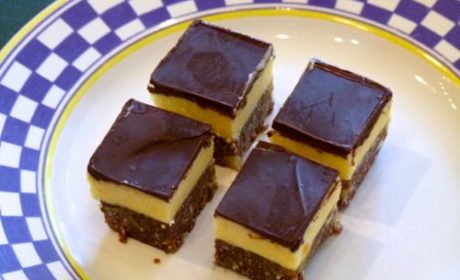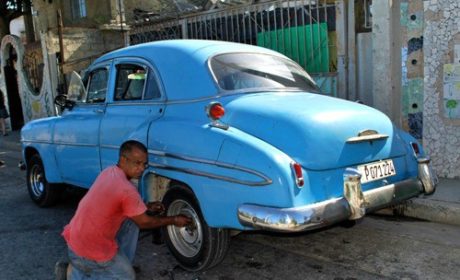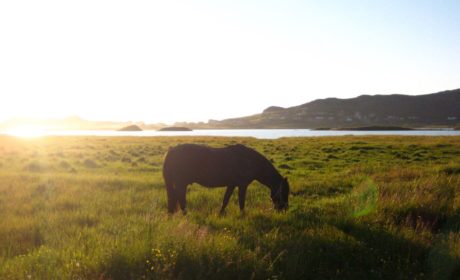Travel to Panama has been gaining in popularity thanks to the country’s many interesting sites and distinctive culture. However, often times, the true heart of a country lies within its indigenous peoples. Today, guest contributor, Jill Dobbe, is here to tell us all about Panama’s Kuna Indians, with special focus on Kuna mola art.
An avid traveler in my 50’s, I find what excites me most about the countries I visit, even more than historic cathedrals or major cultural sites, is scoping out the ethnic and indigenous populations of each country. Their unique dress, traditions, customs, and lifestyle are what draw me to visit new places, and the main reason I love to travel.

The local inhabitants I come across still live much the way their ancestors did and often make up the culture’s ethnic community of artisans, weavers, potters, wood carvers, and painters. They produce their arts and crafts by hand, which often depict native village life, domestic flowers and animals, and traditional scenes displaying the folklore and ceremonies of their societies. The artisans often earn a livelihood from their art, as well as, use it to keep their cultures alive to ensure they are not forgotten.
On my recent trip to Panama, I excitedly searched out the Kuna Indians, the original inhabitants of the Kuna Yala (now recoginzed as Guna Yala) region of Panama. They are also the largest indigenous population of South America. Kuna women are known for producing elaborate, artistic textiles called molas, which are a big part of their tightly knit heritage. Molas, meaning clothing in the Kuna language, are vibrant pieces of cotton cloth embroidered with elaborate zigzag and geometric designs. They are worn as additions to the Kuna’s traditional dress, and also sewn onto bags, clothing, dolls, and more for tourists to buy. The small dark-haired women wear traditional regalia of a long, narrow skirt and blouse with mola patterns sewn on the front and back, bright headscarves, nose rings, and bands designed with multicolored beads that wrap around their wrists, legs, and ankles.

Kuna women, with their elaborate dress, were pictures of beauty from head to toe. The colorful fabric and exquisitely beaded arm and leg bands they wear are truly eye-catching, and I couldn’t get enough of them. As an amateur photographer I longed to photograph each one I came across. However after a few attempts, I learned that Kuna women were not big fans of having their picture taken. Each time I brought my camera up to my eye they turned around, walked away, hid behind their cloth, or shook their heads at me. A couple of the women finally did agree to a photo, but only after requesting that I pay them, or promise to purchase one of their pieces of Kuna mola art.

Molas are a main source of income for the Kuna women. And selling their craft to tourists is one way for them to assimilate with the outside world. Kuna women sit near the refurbished streets of Casco Viejo, waiting for tourists to come along. With the Panama City skyline as a backdrop, a mélange of their personal hand-sewn cloth hangs in colorful display behind each one. Between sales, they spend time sewing and chatting, while also hiding from sneaky photographers that lurk nearby.

On my first visit to the old quarter of Panama, I scoured the tables for a few Kuna mola art purchases, but then pulled myself away to explore more of the area. Casco Viejo, a UNESCO World Heritage Site, is a vivid contrast of old and new since undergoing a speedy revitalization, which was one of the biggest in all of the Americas. Refurbished buildings equipped with wrought iron balconies were decorated with over-flowing baskets of blooming pink, purple, and red flowers. Freshly painted boutique hotels, trendy cafes, and captivating tourist shops sat along narrow sidewalks between manicured parks and green plazas with 15th century-old cathedrals.
Strolling onward toward the city’s boardwalk, I relished in the delicious breeze that blew off the water. Joggers, bike riders, and speed-walkers whisked by as I sauntered further into the park. Gazing in the distance, I spotted two Kuna women selling their Kuna mola art. Excited that I was about to have one last opportunity to photograph them in their resplendence, I put on my friendliest smile, and bounded over. With my camera poised, I mimed taking a photo. This time the short, Kuna woman nodded her head and with a crooked smile, offered me a regal pose. I aimed and snapped away thanking her for making my trip to Panama complete.
Has this article inspired a Panamanian boomer adventure? Start your search for hotels in Panama with us.
Have you ever explored beautiful Panama? Did you purchase any Kuna mola art? Come join the conversation at the My Itchy Travel Feet page on Facebook. Or send us an email with your thoughts.



